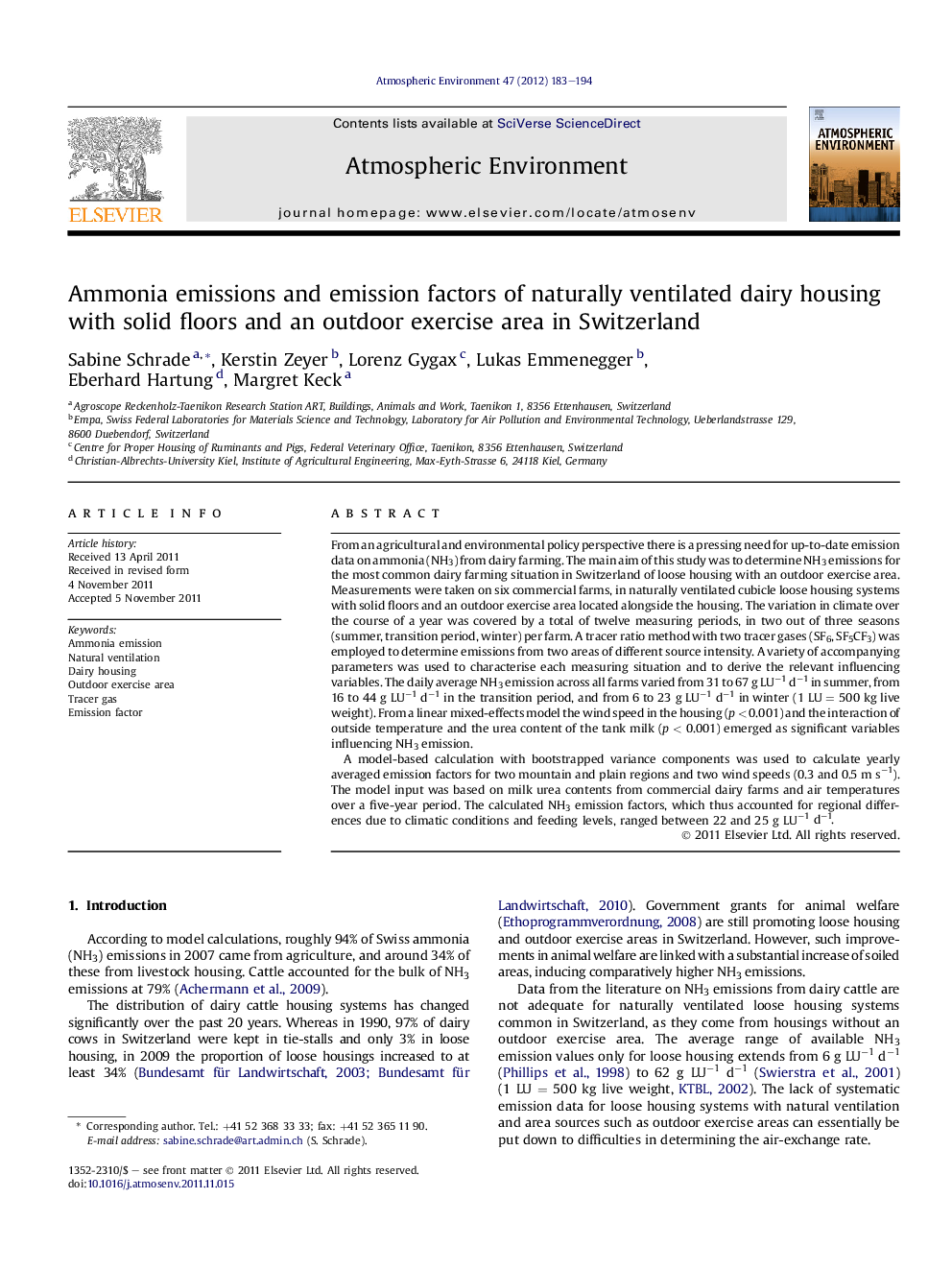| کد مقاله | کد نشریه | سال انتشار | مقاله انگلیسی | نسخه تمام متن |
|---|---|---|---|---|
| 4439005 | 1620424 | 2012 | 12 صفحه PDF | دانلود رایگان |

From an agricultural and environmental policy perspective there is a pressing need for up-to-date emission data on ammonia (NH3) from dairy farming. The main aim of this study was to determine NH3 emissions for the most common dairy farming situation in Switzerland of loose housing with an outdoor exercise area. Measurements were taken on six commercial farms, in naturally ventilated cubicle loose housing systems with solid floors and an outdoor exercise area located alongside the housing. The variation in climate over the course of a year was covered by a total of twelve measuring periods, in two out of three seasons (summer, transition period, winter) per farm. A tracer ratio method with two tracer gases (SF6, SF5CF3) was employed to determine emissions from two areas of different source intensity. A variety of accompanying parameters was used to characterise each measuring situation and to derive the relevant influencing variables. The daily average NH3 emission across all farms varied from 31 to 67 g LU−1 d−1 in summer, from 16 to 44 g LU−1 d−1 in the transition period, and from 6 to 23 g LU−1 d−1 in winter (1 LU = 500 kg live weight). From a linear mixed-effects model the wind speed in the housing (p < 0.001) and the interaction of outside temperature and the urea content of the tank milk (p < 0.001) emerged as significant variables influencing NH3 emission.A model-based calculation with bootstrapped variance components was used to calculate yearly averaged emission factors for two mountain and plain regions and two wind speeds (0.3 and 0.5 m s−1). The model input was based on milk urea contents from commercial dairy farms and air temperatures over a five-year period. The calculated NH3 emission factors, which thus accounted for regional differences due to climatic conditions and feeding levels, ranged between 22 and 25 g LU−1 d−1.
► NH3 emissions were determined for naturally ventilated dairies with outdoor areas.
► A tracer ratio method with SF6 and SF5CF3 enabled to quantify NH3 emissions.
► NH3 emission was influenced by wind speed, temperature and tank milk urea content.
► A multi-site sampling approach depicted seasonal and farm effects.
► NH3 emission factors for naturally ventilated dairies ranged from 22-25 g LU−1 d−1.
Journal: Atmospheric Environment - Volume 47, February 2012, Pages 183–194